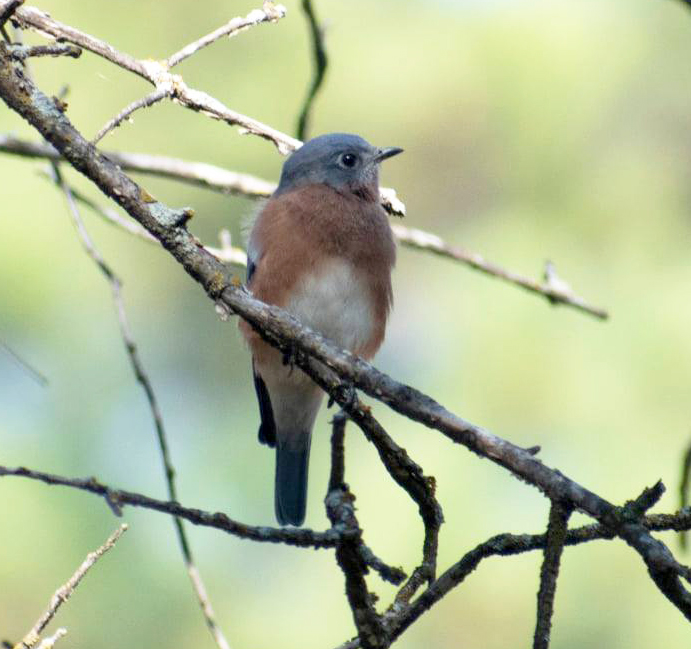
By Grace Huffman
I love bluebirds. Probably because blue is my favorite color, but I’m always happy to see or hear one. This winter was unfortunately very hard on the bluebirds, with as much as 80% of the population perishing during the bitter cold back in February. It’s been very hard to find them here in the Oklahoma City area, even in areas where I used to see them every time I went out there. Thankfully I’ve seen some signs that they are slowly starting to recover, and hopefully it won’t take too long until they are all over the place once again.
Bluebirds are thrushes, belonging to the same family as robins. There are three bluebird species: Eastern, Western, and Mountain, with Easterns staying in the state year-round and Mountains visiting the western part of the state in the winter. Western Bluebirds are very rare in the state. Eastern Bluebirds are partially migratory, breeding in south-central Canada and wintering in Arizona, with a wide area inside their range where they are year-round, including here in Oklahoma.
Eastern Bluebirds are cavity nesters, using old woodpecker holes or nest boxes that people have put up in hopes of attracting them. They will fill the bottom of the cavity with items like dried grasses & pine needles, then line the nest with even finer materials, as well as feathers. They will often raise more than one brood, with the young of the first brood helping to feed their younger siblings. The parents will often stay together for several seasons, although it is believed that some eggs in a brood may have a parent that isn’t one of the pair.
After being in decline in the early 1900’s due to competition with non-native species for nesting sites, bluebirds have actually been increasing in population. While Oklahoma’s bluebirds are now down significantly, there are things you can do to help them recover and attract them to your yard! Put up bluebird boxes that face open areas to encourage them to nest, and keep an eye out in case House Sparrows or European Starlings try to take over the nest box. They are non-native and unprotected, so it’s okay to remove their nesting material. However, if a wren or other bird decides your box is a good place to nest, you’ll just have to enjoy them while they’re there, as it’s illegal to remove the nest of a native bird. You can also offer mealworms at your feeders to attract bluebirds! I hope you get to see one soon!
References: https://www.centraloklahomaweeklies.com/2021/07/12/searching-for-bluebirds/ & allaboutbirds.org
